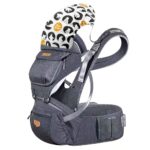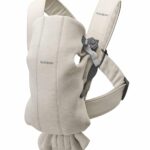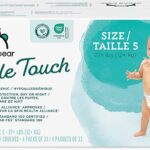“Traveling With a Baby” maintaining healthy eating for babies while traveling is essential. Careful planning ensures your little one’s diet remains balanced and safe.
Embarking on a trip with a baby requires extra attention to their dietary needs. Parents face the challenge of keeping baby food at the right temperature and ensuring the food’s safety and nutritional value. The key is to prepare and pack wisely.
Choose easily transportable, non-perishable items, and remember to bring along any necessary feeding equipment. It’s also essential to consider the availability of facilities to warm up or clean items on the go. By prioritizing your baby’s eating routine, you can minimize disruptions and maintain a sense of normalcy, even while away from home. This introductory guide aims to provide practical advice on how to manage your baby’s meals during travels, ensuring they receive the proper nutrients to support their growth and development.
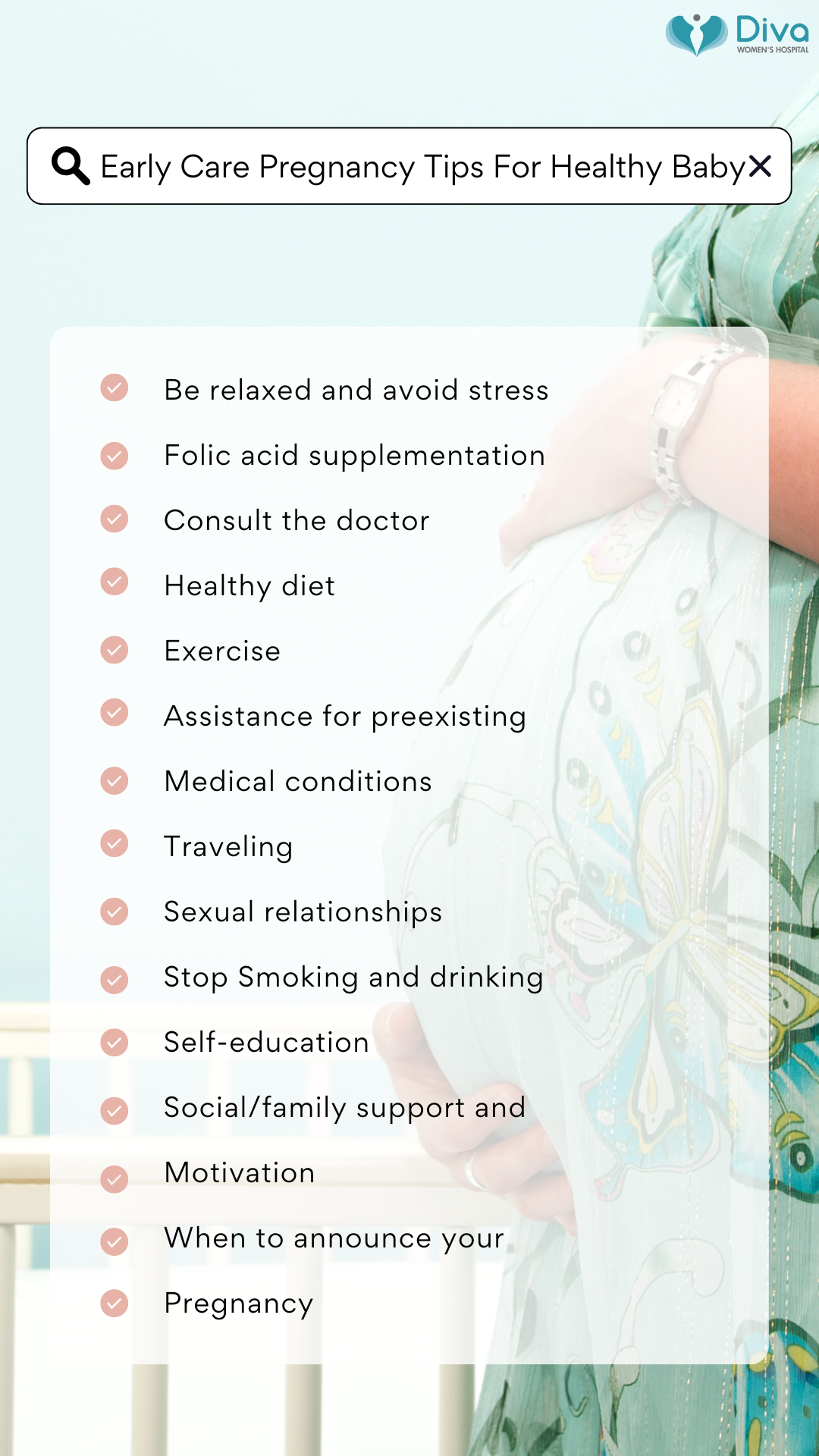
Credit: divahospital.com
Pre-trip Planning For Baby’s Meals while Traveling With a Baby
Pre-Trip Planning for Baby’s Meals is crucial for a smooth journey. This ensures your baby eats well and stays happy. Let’s explore essential steps for meal planning.
Choosing Accommodations With Kitchens
Staying in a place with a kitchen is vital. It allows you to prepare meals just like at home. Look for hotels or vacation rentals with at least a small kitchenette.
Grocery Shopping List Essentials
Before you travel, create a grocery list. This list should include items that are easy to cook and familiar to your baby.
- Baby formula or breast milk
- Ready-to-eat baby jars or pouches
- Instant oatmeal or rice cereals
- Fruits like bananas, apples, and pears
- Vegetables such as carrots and sweet potatoes
- Snacks like yogurt and cheese sticks
These essentials ensure your baby has nutritious meals throughout your trip.
Packing Essentials For Feeding Baby
Embarking on a trip with a baby requires smart planning, especially when it comes to meals. Let’s explore the essentials you need to keep your little one well-fed and happy.
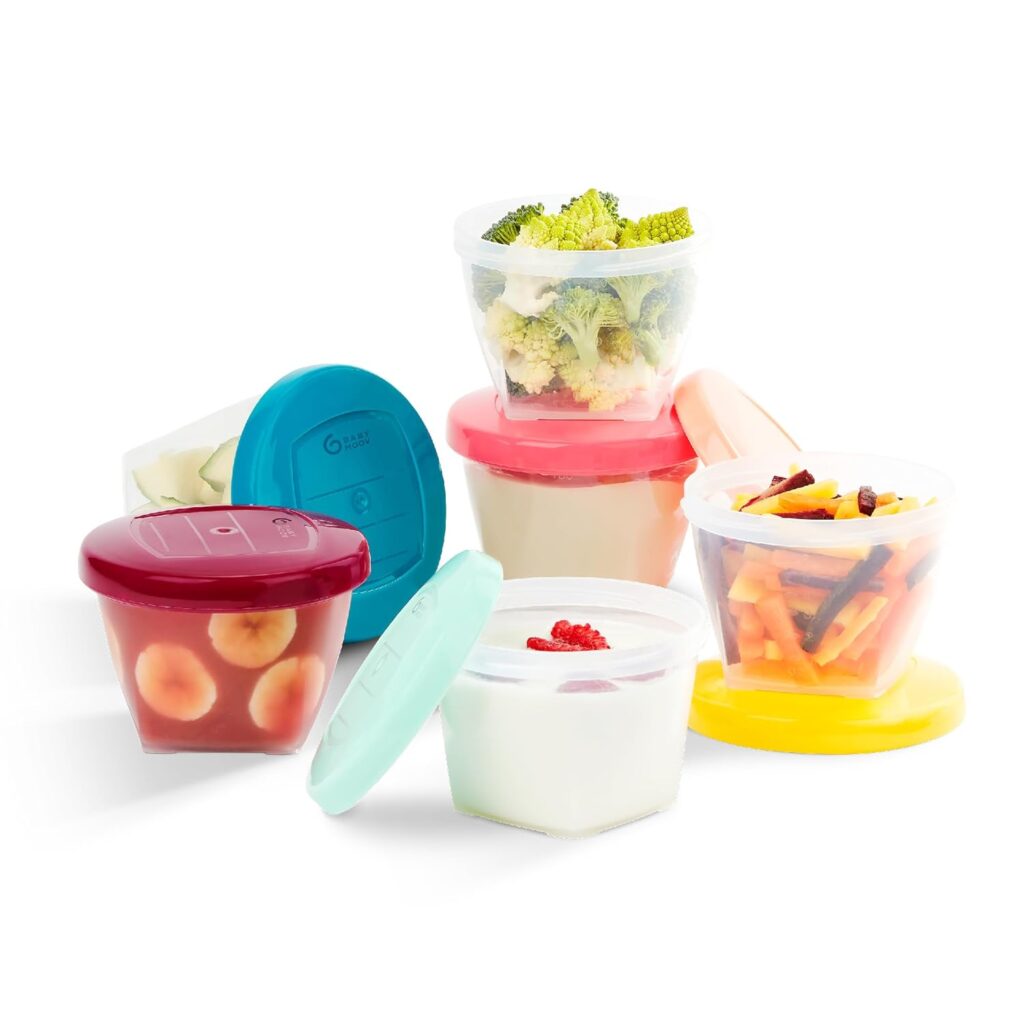
Keeping Baby Food Fresh
A cool bag is your best friend for keeping baby food fresh. Line it with ice packs to maintain the right temperature.
- Choose insulated containers for homemade purees.
- Check expiration dates on packaged food.
- Opt for reusable pouches for easy feeding on the go.
Must-have Utensils And Accessories
Utensils and accessories make feeding time easier and cleaner. Here’s what to pack:
| Item | Use |
|---|---|
| Silicone bibs | Keep clothes clean |
| Soft spoons | Protect baby’s gums |
| Sippy cups | Hydrate without spills |
| Snack containers | Hold bite-sized treats |
Remember to pack a few extra utensils in case some get lost or dirty.
Navigating Airport Security With Baby Food
Embarking on a journey with your baby can be a thrilling adventure, but navigating airport security with baby food poses its own set of challenges. Understanding the rules and preparing accordingly can make your experience hassle-free. Here’s how to manage baby meals while ensuring they meet your little one’s nutritional needs.
Tsa Guidelines For Baby Meals
The Transportation Security Administration (TSA) allows parents to bring baby food in reasonable quantities. This includes formula, breast milk, and juice. These items are exempt from the 3.4-ounce liquid limit. It’s important to declare these items at the checkpoint for additional screening.
| Type of Baby Food | TSA Limit | Notes |
|---|---|---|
| Breast Milk | No Limit | Declare for screening |
| Formula | No Limit | Separate from other liquids |
| Baby Juices | No Limit | Inform the TSA officer |
| Purees | No Limit | Remove from carry-on for scanning |
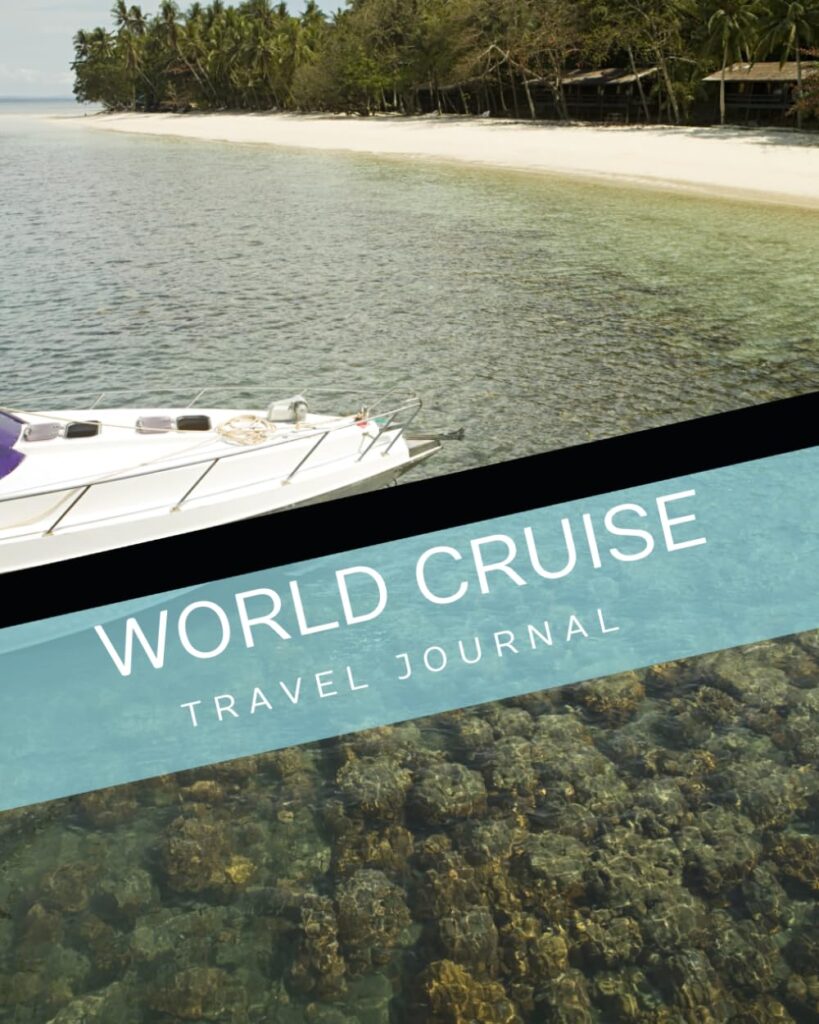
Tips For A Smooth Security Check
- Organize baby food in a separate bag.
- Use clear containers for easy inspection.
- Declare all baby food to the TSA officer.
- Request a hand inspection if you’re uncomfortable with X-ray screening.
- Keep ice packs with the food if necessary—they are allowed.
- Be patient as additional screening may take time.
By following these tips, you can ensure that your baby’s meals pass through security smoothly, keeping your journey stress-free.
On-the-go Breastfeeding And Pumping
Traveling with a baby requires a game plan for feeding. Breastfeeding and pumping on the move can be stress-free with the right approach. Embrace the journey with these tips for healthy, happy feeding times.
Finding Nursing-friendly Locations
Scout for quiet spots in airports, parks, or museums. Look for mother’s rooms or family lounges. Use apps to find breastfeeding-friendly places. Carry a lightweight nursing cover for privacy anywhere.
- Search for designated nursing areas before trips.
- Use breastfeeding apps to locate spots on the go.
- Keep a nursing scarf handy for impromptu feeds.
Portable Pumping Solutions
Choose a compact, battery-powered breast pump for travel. Bring extra batteries or a power bank. Pack a cooler bag with ice packs to store milk safely.
| Item | Use |
|---|---|
| Portable breast pump | For efficient pumping anywhere |
| Storage bags/bottles | To keep milk fresh on the move |
| Cooler bag with ice packs | Maintains milk temperature |
- Invest in a travel-friendly pump.
- Carry extra storage containers.
- Remember cleaning supplies for pump parts.
Healthy Snacks For Baby While Traveling
Embarking on a journey with a little one in tow requires smart planning, especially when it comes to meals. Healthy Snacks for Baby While Traveling ensure your baby stays nourished and happy. Let’s explore some great snack options that are both nutritious and travel-friendly.
Nutritious And Convenient Options
When selecting snacks for your baby, prioritize both nutrition and convenience. Aim for options that provide essential vitamins and minerals without the need for refrigeration or heating. Here are a few suggestions:
- Dried fruit like apricots or raisins for natural sweetness.
- Whole-grain cereals or puffs that are easy to grasp.
- Small cubes of cheese for a dose of calcium.
- Pre-packed baby food pouches with pureed fruits and veggies.
Avoiding Mess And Waste
To keep mess and waste to a minimum, choose snacks that are tidy and easy to handle. Consider these tips:
| Snack Type | Why It’s Mess-Free |
|---|---|
| Soft rice cakes | They don’t crumble easily. |
| Peelable fruits like bananas | Their skins contain the mess. |
| Vegetable sticks | They’re dry and leave minimal residue. |
| Reusable snack cups | They keep snacks contained and are easy to refill. |
Remember to pack extra bibs or a small cloth to clean up after snack time. Travel-friendly containers also help in keeping snacks fresh and avoiding spills.
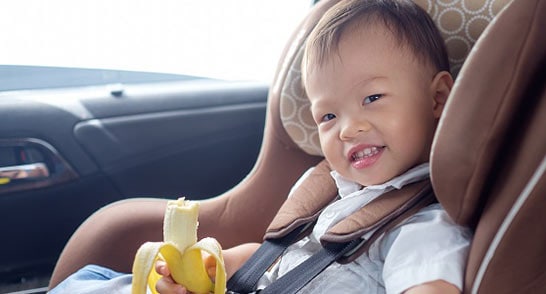
Credit: www.cdc.gov
Dealing With Time Zone Changes And Feeding Schedules
Dealing with Time Zone Changes and Feeding Schedules can be a challenge when traveling with a baby. Long flights and new locations disrupt routines. But, with the right approach, you can maintain your baby’s health and happiness. Let’s explore how to adjust your baby’s meals and maintain routines amidst these changes.
Adjusting Baby’s Meal Times
When flying across time zones, your baby’s usual meal times may no longer sync with local times. Start by shifting your baby’s eating schedule gradually. A few days before departure, adjust meals and snacks by 15 minutes each day. This slow shift helps your baby adapt smoothly upon arrival.
- Plan ahead: Adjust your baby’s eating times before the trip.
- Be patient: Your baby may need time to adapt to the new schedule.
- Stay flexible: Watch for hunger cues and be ready to feed on demand.
Maintaining Routine Amidst Change
Keeping a sense of routine is key for your baby’s comfort. Stick to familiar foods and feeding practices as much as possible. Pack favorite snacks and utensils. Use a portable cooler to store fresh meals and keep them at the right temperature. A consistent bedtime routine with a familiar book or toy can also help.
| Tip | Details |
|---|---|
| Consistent Bedtimes | Help your baby settle in a new environment with a regular sleep routine. |
| Familiar Foods | Bring snacks and dishes your baby knows and enjoys. |
| Portable Feeding Gear | Include a travel high chair, bibs, and utensils for comfort and convenience. |
Remember to stay calm and give your baby time to adjust. They take cues from you, so a relaxed parent often means a relaxed baby. With these strategies, you’ll make mealtime a breeze, no matter the time zone!
Introducing New Foods During Travel
Traveling with a baby opens a world of experiences, including the chance to introduce them to new foods. When you travel, you expose your baby to different cultures and cuisines. This can be a fun and exciting way to expand their palate and encourage healthy eating habits. Yet, finding a balance between new tastes and familiar comfort foods is key. Let’s explore how to introduce new foods to your baby while on the go, keeping their diet healthy and safe.
Balancing New Experiences With Familiarity
Keep mealtime stress-free by blending new foods with old favorites. This approach eases your baby into trying different flavors without overwhelming them. For instance, mix a new vegetable with a well-loved grain. Here’s how to maintain this balance:
- Start small: Offer tiny tastes of new foods alongside trusted staples.
- Mix it up: Combine new items with familiar ones in the same meal.
- Keep routines: Stick to regular meal and snack times to provide consistency.
Allergy Awareness And Precautions
Introducing new foods means being vigilant about allergies. When you’re away from home, managing potential reactions becomes even more critical. Here are steps to ensure your baby’s safety:
- Research: Know common allergens in your travel destination’s cuisine.
- Introduce one at a time: Offer new foods individually to identify any reactions.
- Carry allergy info: Keep a list of your baby’s known allergies to share with restaurants.
Always have an allergy action plan and a first-aid kit ready. Be prepared to handle any situation that may arise while exploring new tastes with your baby.
Hydration For Baby On The Move
Embarking on a journey with your little one can be thrilling yet challenging, especially when it comes to maintaining their health and nutrition. Hydration for Baby on the Move is a critical aspect of baby care that requires special attention. Babies are more susceptible to dehydration, and their fluid needs can fluctuate with the climate, altitude, and their activity levels. This section of the blog will cover essential tips to ensure your baby stays well-hydrated during your travels.
Importance Of Fluid Intake
Keeping your baby properly hydrated is key to avoiding discomfort and health issues. Adequate fluid intake helps in regulating body temperature, ensuring good digestion, and facilitating nutrient absorption. It’s vital to monitor your baby for signs of thirst and offer fluids regularly throughout the day.
Options For Clean And Safe Water
When traveling, finding clean and safe water for your baby can be a concern. Always opt for bottled water with an intact seal or water that has been boiled and cooled. For added safety, consider using a portable water purifier or sterilizing tablets.
| Hydration Source | Notes |
|---|---|
| Bottled Water | Ensure the seal is not broken. |
| Boiled Water | Cool before offering to baby. |
| Water Purifier | Portable options are available. |
- Check the label on bottled water for source and mineral content.
- Carry a thermos to keep boiled water at a safe temperature.
- Use baby-safe cleaning products for bottles and sippy cups.
Dealing With Dietary Restrictions And Allergies
Traveling with a baby presents unique challenges, especially when it comes to healthy eating. Parents must navigate dietary restrictions and allergies with care. This can be even more daunting in unfamiliar places. Here, we’ll discuss how to communicate your baby’s needs across different cultures and the importance of emergency preparedness. These tips will help maintain your baby’s diet and health on the road.
Communicating Needs In Different Cultures
When abroad, explaining your baby’s dietary needs might be tricky. Always carry a translated allergy card. This card should clearly list all allergies and restrictions in the local language. Restaurants and hosts will appreciate this clear communication.
Research common dishes before you go. Know the ingredients and find safe options for your baby. Learn phrases like “No nuts” or “Dairy-free” in the local language. Use apps for language translation to help bridge any gaps.
Emergency Preparedness
Always be ready for the unexpected. Pack a travel-friendly medical kit with antihistamines or prescribed medications. Know the emergency services number for your destination. Save it in your phone.
- Keep a doctor’s note for any prescribed meds.
- Have a list of nearby hospitals or clinics.
- Carry extra safe snacks in case suitable options are scarce.
Portable Cooking Gadgets For Baby Food
Traveling with a baby can be a delightful yet challenging experience, especially when it comes to feeding. Thankfully, portable cooking gadgets have made it easier than ever to prepare fresh, nutritious meals on the go. These compact and convenient tools ensure that your baby eats well, no matter the destination.
Travel-friendly Baby Food Makers
Travel-friendly baby food makers are a game-changer for parents on the move. These gadgets are designed to steam, blend, and sometimes even reheat food with minimal effort.
- Compact design: Easily fits in travel bags.
- Quick operation: Prepare purees in minutes.
- Easy to clean: Features such as dishwasher-safe components.
Popular models like the Babycook Solo and the Beaba Babycook include a steam basket, blender, and even a reheating function, making them an all-in-one solution for baby food preparation on the road.
Heat-and-serve Solutions
Heat-and-serve solutions are perfect for parents who need a quick, hassle-free meal for their babies. These products come in handy, especially when you’re out exploring or during long travel days.
| Product Type | Features | Usage |
|---|---|---|
| Pre-packed baby meals | Organic, no preservatives | Heat in a water bath or microwave |
| Travel bottle warmers | USB-powered, fits most bottles | Use in cars, planes, or hotels |
Options like the portable bottle warmer by Tommee Tippee or pre-packed organic meals from brands like Ella’s Kitchen make feeding time effortless and mess-free.
Eating Out With Baby: Restaurant Tips
Going out to eat with a baby might seem tough, but it can be smooth with the right approach. Plan ahead to ensure your little one enjoys the meal as much as you do.
Choosing Baby-friendly Restaurants
Start by picking the right spot. Look for restaurants with enough space for strollers and a welcoming attitude towards children.
- Check for high chairs and changing facilities.
- Menus should have simple, healthy options suitable for little ones.
- Quiet, relaxed environments usually work best.
What To Bring To The Table
Even in baby-friendly spots, you need the right gear. Prepare a small dining kit for your baby.
| Item | Use |
|---|---|
| Bibs | Keep clothes clean. |
| Wet Wipes | Quick cleanups after eating. |
| Small Toys | Keep baby entertained. |
| Snacks | In case the meal takes long. |
Also, bring a container for leftover food if baby doesn’t finish their meal.
Homemade Vs. Store-bought: Travel Considerations
Deciding between homemade and store-bought baby food is a big decision for traveling parents. Each choice has its own set of benefits and drawbacks. This section will help you weigh the options, ensuring your baby stays happy and well-fed on the go.
Pros And Cons While Traveling
| Type | Pros | Cons |
|---|---|---|
| Homemade | Fresh ingredientsNo preservativesCustomizable | Needs refrigerationShorter shelf lifeMore preparation |
| Store-Bought | Long shelf lifeConvenientTravel-friendly packaging | Added sugarsPreservativesLess fresh |
Safety And Storage
Keeping baby food safe is crucial, especially on the road. Here’s how:
- Homemade food should stay cold. Use an insulated bag with ice packs.
- Store-bought options are easier to store. Many don’t need refrigeration until opened.
- Always check for spoilage signs before feeding your baby.
- Wash your hands and use clean feeding utensils.
Choose the right food option based on your travel length and storage facilities. Always prioritize your baby’s health and safety.
Cultural Considerations For Baby’s Diet Abroad
Embarking on an international trip with a baby requires thoughtful planning, especially when considering their diet. Different cultures offer unique foods and culinary practices. Adapting to these while maintaining a healthy diet for your baby is essential. Here’s how to navigate cultural considerations for your baby’s diet abroad.
Respecting Local Customs
Eating habits and mealtime customs can vary greatly by country. It’s vital to respect these traditions while feeding your baby. Research common dietary practices in your destination. Be mindful of local etiquette, especially when dining with locals. Offer gratitude if locals share their food with your baby.
- Ask about ingredients – Ensure local foods are safe for your baby.
- Meal schedules – Align your baby’s eating times with local customs if possible.
- Portion sizes – Offer small portions to avoid waste and respect resources.
Incorporating Local Flavors
Introducing your baby to local flavors can be exciting. Start with simple, mild foods that are popular among local children. Watch for any allergic reactions.
| Local Food | Description | Age Appropriateness |
|---|---|---|
| Mashed Plantains | Soft and easily digestible | 6+ months |
| Rice Porridge | Gentle on the stomach | 8+ months |
Remember to go slow when introducing new foods. Keep portions small and watch for reactions. Enjoying local foods can be a healthy, fun part of your travel experience.
Staying Healthy: Food Safety Tips
When traveling with a baby, ensuring the little one’s meals are safe is essential. Eating healthy on the go can be challenging, but with the right preparation, parents can minimize risks. Here are some vital tips for keeping your baby’s food safe and nutritious.
Avoiding Contamination
Keep hands and surfaces clean. Always wash your hands before preparing baby food. Use sanitizing wipes for surfaces on planes or in restaurants.
Separate raw and cooked foods. This prevents harmful bacteria from raw foods spreading to ready-to-eat meals.
- Pack smart. Use separate containers for different foods. Zip-lock bags are great for snacks.
- Check temperatures. Keep cold food cold and hot food hot. A portable food thermometer helps.
Recognizing Safe Food Practices
Choose wisely. When dining out, pick restaurants that look clean and well-managed.
Read labels. Check expiration dates on packaged foods. Look for signs of tampering or damage.
| Food Item | Safe Practice |
|---|---|
| Bottled formula | Keep sealed until use |
| Homemade purees | Store in airtight containers |
| Fresh fruits | Wash and peel before serving |
Monitor portion sizes. Serve small amounts to ensure food doesn’t sit out for long and spoil.
Reflecting On The Journey: Baby’s Eating Milestones
Embarking on a journey with a baby requires smart planning for their meals. Discover essential tips for maintaining your infant’s nutritious diet on the go, ensuring they hit every eating milestone with ease.
Reflecting on the journey of traveling with a baby, parents witness numerous milestones, especially when it comes to eating. From the first road trip snack to the introduction of exotic flavors abroad, each milestone contributes to a baby’s development. It’s essential to capture these moments and learn from them for future travels.
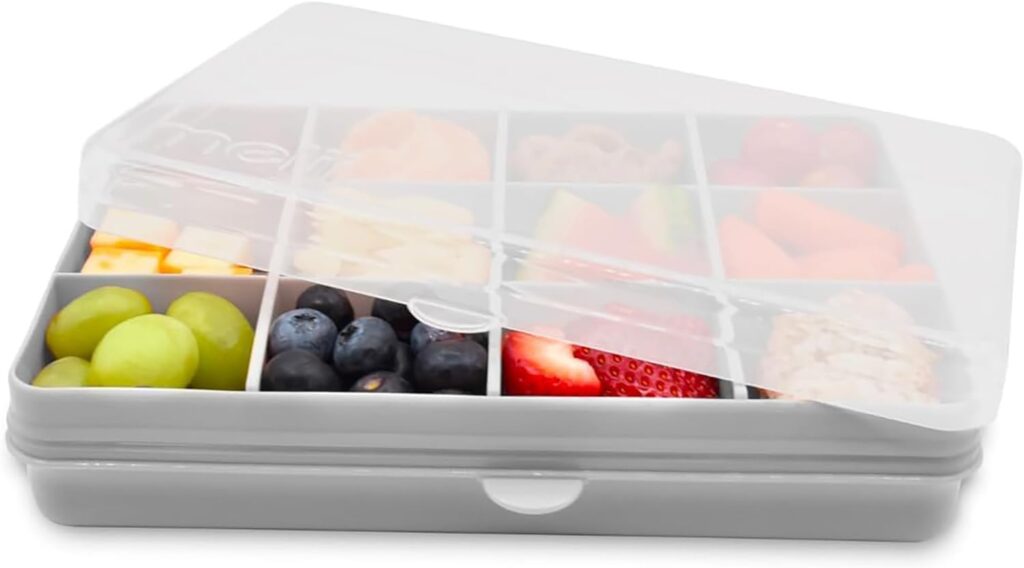
Capturing Memorable Food Moments
Traveling introduces babies to a variety of new tastes and textures, marking significant moments in their eating journey. Document each new food experience with photos and notes. This not only creates a cherished memory but also helps parents track the baby’s reactions to different foods. Use a simple table to organize the details:
Add more rows as needed
| Date | Location | Food Introduced | Baby’s Reaction |
|---|---|---|---|
| April 1 | Austin, Texas | Avocado Puree | Loved it! |
Highlight milestones like the first time they try a local dish or the successful introduction of allergenic foods. These moments pave the way for a well-rounded palate.
Learning And Adapting For Future Travels
Each trip teaches valuable lessons for the next one. Keep a list of what worked and what didn’t, such as:
- Favorite snacks that are travel-friendly
- Go-to meals that are easy to find or prepare on the go
- Feeding gear that made mealtime more manageable
Use this information to plan and pack smarter for the next adventure. Remember to adapt your strategy as your baby grows and their eating habits change. Create a checklist for future trips:
- Reusable containers for storing snacks
- Baby utensils and bibs
- Portable cooler bag for keeping foods fresh
Healthy eating while traveling with a baby is achievable with preparation and flexibility. By reflecting on each journey, parents can ensure their baby continues to thrive, no matter where the road takes them.

Credit: www.mummycooks.com
Frequently Asked Questions
How To Manage Baby Food While Travelling?
Pack pre-made or homemade baby food in sealable containers. Use a cooler bag with ice packs for long trips. Check with airlines about warming milk.
How Do I Keep My Baby Food Cold While Traveling?
Use a portable cooler bag with ice packs to maintain the cold temperature of your baby’s food while traveling.
How Do I Feed My 1 Year Old While Traveling?
Pack portable snacks and pre-made baby meals for convenience. Use a travel cooler to store perishables. Utilize hotel kitchenettes for meal prep. Stick to familiar foods to avoid digestion issues. Always have a backup meal option ready.
How Do You Travel With Baby Food And Formula?
To travel with baby food and formula, follow these tips: 1. Check airline policies on traveling with baby food. 2. Pack formula and baby food in your carry-on. 3. Use insulated bags for temperature-sensitive items. 4. Bring disposable feeding supplies for convenience.
5. Pre-measure formula to ease preparation during travel.
What Are The Best Foods For Babies On Flights?
Choose easily portable, non-perishable foods like banana, avocado, or pre-packed baby food. Always check with airlines for guidelines on carrying baby food.
Conclusion
Embracing the journey of parenthood includes mastering the art of healthy eating for your little one, even while on the go. With the insights and strategies shared, you’re now equipped to nourish your baby amidst travel adventures. Remember to keep meals balanced, stay flexible, and never compromise on nutrition.
Safe travels and happy feeding!




